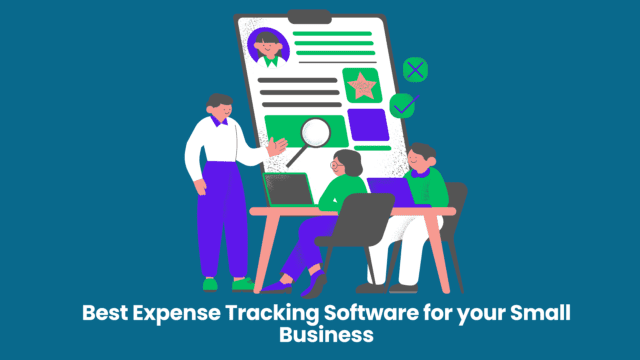Medical Billing Software for Small Business is a specialized software application that helps healthcare providers manage and automate their billing processes. It is designed to handle the unique needs and requirements of small medical businesses. Such as solo practitioners, clinics, and small medical practices.
This type of software typically offers features like patient information management, appointment scheduling, invoicing, and billing, claims management, insurance verification, and reporting. It simplifies the billing process by automating tasks like generating invoices, submitting claims to insurance companies, and tracking payment statuses.
By using billing software, small businesses can streamline their billing operations, reduce errors, improve efficiency, and ultimately accelerate the payment cycle. It also helps to maintain accurate patient records, manage insurance claims, and track financial performance.
Small businesses need to choose billing software that integrates well with their existing practice management systems and is compliant with healthcare regulations, such as HIPAA (Health Insurance Portability and Accountability Act).
Overall, billing or report software for small businesses is a valuable tool that enables healthcare providers to effectively manage. Their billing processes, enhance revenue collection and improve overall financial management.
Features of Medical Billing Software for Small Business
Medical billing software for small business typically offers a range of features to help healthcare providers manage and automate their billing processes. Some key features include:
- Patient Information Management: The software allows healthcare providers to store and manage patient demographics, contact information, insurance details, and medical history securely.
- Appointment Scheduling: This feature enables users to schedule and manage patient appointments, including setting reminders and sending notifications to both patients and staff.
- Invoicing and Billing: The software generates accurate and professional invoices, automatically calculates charges based on services provided, and tracks billing history.
- Claims Management: It simplifies the process of submitting claims to insurance companies electronically, reducing paperwork and minimizing errors. The software also tracks the status of claims, identifies any rejections, and facilitates resubmission when necessary.
- Insurance Verification: It verifies patient insurance coverage in real-time, ensuring accurate billing and reducing the risk of payment denials due to insufficient coverage.
- Reporting and Analytics: The software generates reports and provides analytics that helps healthcare providers track financial performance, identify revenue trends, and monitor payment collection.
Additionally features
- Integration and Compatibility: It integrates seamlessly with existing practice management systems, electronic health record (EHR) systems, and other relevant software applications to streamline workflows and data exchange.
- HIPAA Compliance: The software adheres to HIPAA regulations, ensuring the security and confidentiality of patient data while maintaining privacy standards.
- User-Friendly Interface: The software offers a user-friendly interface that is easy to navigate. Making it accessible for small businesses without extensive IT resources or technical expertise.
- Customer Support: Reliable technical support and training resources are provided to assist users with any issues or questions that may arise during implementation and daily usage.
Remember that specific software packages may offer additional features tailored to the unique needs of different healthcare specialties or organizations. It’s important to evaluate the specific requirements of your small business and choose a medical billing software that best fits your needs.
Best Medical Billing Software for Small Business in 2023

Choosing the best medical billing software for small businesses in 2023 can greatly benefit your practice by streamlining your billing processes and improving overall financial management. Here are some of the top options to consider:
Kareo:
Kareo is a popular choice for small medical practices due to its comprehensive features and user-friendly interface. It offers robust billing and invoicing capabilities, claims management, appointment scheduling, and reporting. Kareo also integrates well with other practice management systems.
AdvancedMD:
AdvancedMD is a cloud-based software that offers a wide range of features, including patient scheduling, billing, claims management, and reporting. It includes customizable templates and appeals management to help maximize revenue collection.
DrChrono:
DrChrono is an all-in-one solution that combines electronic health records (EHR) and medical billing functionalities. It provides seamless integration between billing and patient records, allowing for efficient and accurate billing processes.
TherapyNotes:
Designed specifically for mental health practices, TherapyNotes offers specialized features. Such as electronic claims submission, appointment reminders, and patient portal access. It also includes compliance with HIPAA regulations.
CareCloud:
CareCloud is a robust medical billing software that offers integrated EHR capabilities. It includes features such as scheduling, claims management, reporting, and revenue cycle management to optimize financial performance.
CollaborateMD:
CollaborateMD is known for its intuitive interface and affordability. It offers billing, claims management, scheduling, and reporting features. It also provides real-time eligibility verification to help minimize claim denials.
eClinicalWorks:
eClinicalWorks is a comprehensive solution that includes EHR, billing, and practice management features. It offers customizable templates, claims management, and reporting tools. It is suitable for small practices as well as larger medical organizations.
PracticeSuite:
PracticeSuite is a web-based medical billing software that offers an array of features, including appointment scheduling, claims management, reporting, and revenue cycle management. It also provides training and customer support.
BillingParadise:
BillingParadise is known for its personalized approach and range of services, including medical billing, coding, and revenue cycle management. They cater to the unique needs of small medical practices and provide expert support.
NueMD:
NueMD offers a user-friendly interface and a variety of features, including appointment scheduling, claims management, reporting, and patient portal access. It also integrates with various EHR systems.
When choosing the best medical billing software for your small business, consider factors. Such as your specific needs, budget, ease of use, scalability, and integration capabilities. It is also beneficial to request demos or trials to assess the software’s suitability for your practice.
Comparison Charts of Best Medical Billing Software for Small Business
Here are comparison charts of the best medical billing software for small businesses. These charts provide an overview of key features and capabilities to help you make an informed decision:
Comparison Chart 1: Kareo, AdvancedMD, and DrChrono
| Feature | Kareo | AdvancedMD | DrChrono |
|---|---|---|---|
| Patient Information Management | ✓ | ✓ | ✓ |
| Appointment Scheduling | ✓ | ✓ | ✓ |
| Invoicing and Billing | ✓ | ✓ | ✓ |
| Claims Management | ✓ | ✓ | ✓ |
| Insurance Verification | ✓ | ✓ | ✓ |
| Reporting and Analytics | ✓ | ✓ | ✓ |
| Integration and Compatibility | ✓ | ✓ | ✓ |
| HIPAA Compliance | ✓ | ✓ | ✓ |
| User-Friendly Interface | ✓ | ✓ | ✓ |
| Customer Support | ✓ | ✓ | ✓ |
Comparison Chart 2: TherapyNotes, CareCloud, and CollaborateMD
| Feature | TherapyNotes | CareCloud | CollaborateMD |
|---|---|---|---|
| Patient Information Management | ✓ | ✓ | ✓ |
| Appointment Scheduling | ✓ | ✓ | ✓ |
| Invoicing and Billing | ✓ | ✓ | ✓ |
| Claims Management | ✓ | ✓ | ✓ |
| Insurance Verification | ✓ | ✓ | ✓ |
| Reporting and Analytics | ✓ | ✓ | ✓ |
| Integration and Compatibility | ✓ | ✓ | ✓ |
| HIPAA Compliance | ✓ | ✓ | ✓ |
| User-Friendly Interface | ✓ | ✓ | ✓ |
| Customer Support | ✓ | ✓ | ✓ |
Comparison Chart 3: eClinicalWorks, PracticeSuite, and BillingParadise
| Feature | eClinicalWorks | PracticeSuite | BillingParadise |
|---|---|---|---|
| Patient Information Management | ✓ | ✓ | ✓ |
| Appointment Scheduling | ✓ | ✓ | ✓ |
| Invoicing and Billing | ✓ | ✓ | ✓ |
| Claims Management | ✓ | ✓ | ✓ |
| Insurance Verification | ✓ | ✓ | ✓ |
| Reporting and Analytics | ✓ | ✓ | ✓ |
| Integration and Compatibility | ✓ | ✓ | ✓ |
| HIPAA Compliance | ✓ | ✓ | ✓ |
| User-Friendly Interface | ✓ | ✓ | ✓ |
| Customer Support | ✓ | ✓ | ✓ |
Comparison Chart 4: NueMD
| Feature | NueMD |
|---|---|
| Patient Information Management | ✓ |
| Appointment Scheduling | ✓ |
| Invoicing and Billing | ✓ |
| Claims Management | ✓ |
| Insurance Verification | ✓ |
| Reporting and Analytics | ✓ |
| Integration and Compatibility | ✓ |
| HIPAA Compliance | ✓ |
| User-Friendly Interface | ✓ |
| Customer Support | ✓ |
Please note that these charts provide a general comparison of the features offered by each software. It’s important to evaluate your specific business needs and requirements before making a final decision.
How to Choose the Right Medical Billing Software for Your Small Business
Choosing the right medical billing software for your small business is crucial for streamlining your billing processes and improving overall financial management. Here are some factors to consider when making your decision:
- Evaluate your specific needs: Assess your business requirements and priorities. Consider factors such as the size and type of your practice, the volume of patients and transactions, and any specific billing or specialty requirements.
- Functionality: Identify the essential features you require in medical billing software, such as patient information management, appointment scheduling, invoicing and billing, claims management, insurance verification, reporting, and integration capabilities. Ensure that the software meets your unique needs and allows for customization, if necessary.
- Ease of use: Look for a user-friendly interface that is intuitive and easy to navigate. The software should be accessible to users with varying levels of technical expertise and minimize the need for extensive training.
- HIPAA compliance: Medical billing software must be compliant with healthcare regulations, especially the Health Insurance Portability and Accountability Act (HIPAA). Ensure that the software adheres to security and privacy standards to protect patient data.
- Integration capabilities: Verify if the software can seamlessly integrate with your existing systems. Such as electronic health record (EHR) platforms, practice management systems, or other relevant software. The integration allows for efficient workflows and reduces errors in data transfer.
- Scalability: Consider the growth potential of your small business. Choose a software that can scale with your practice as it expands and accommodates increased patient volume.
- Budget: Determine your budget for medical billing software, including upfront costs, ongoing fees, and any additional expenses such as training or technical support. Compare pricing plans and consider the value offered by each software.
Additionally, choose
- Customer support: Evaluate the level of customer support the software vendor provides. Ensure they offer reliable technical assistance, training resources, and responsive customer service to address any issues or questions that arise during implementation and usage.
- Read reviews and seek recommendations: Look for reviews and ratings of different medical billing software from trusted sources. Seek recommendations from colleagues or other healthcare professionals who have experience with similar software.
- Request demos or trials: Take advantage of demo versions or free trials offered by software vendors. This allows you to explore the software’s features, user experience, and suitability for your small business.
By considering these factors and thoroughly evaluating multiple options, you can choose the right medical billing software that aligns with your small business needs, improves efficiency, and enhances revenue collection.
Bottom line
This billing software for small businesses is a specialized software application that helps healthcare providers automate their billing processes. It offers features like patient information management, appointment scheduling, invoicing, and billing, claims management, insurance verification, and reporting. This software streamlines billing operations, reduces errors, and improves efficiency. It helps maintain patient records, manage insurance claims, and track financial performance.
It is important to choose software that integrates well with practice management systems and is compliant with healthcare regulations. The best medical billing software for small business in 2023 includes Kareo, AdvancedMD, DrChrono, TherapyNotes, CareCloud, CollaborateMD, eClinicalWorks, PracticeSuite, BillingParadise, and NueMD. When choosing software, evaluate specific needs, functionality, ease of use, HIPAA compliance, integration capabilities, scalability, budget, and customer support. Request demos or trials to assess suitability.



















